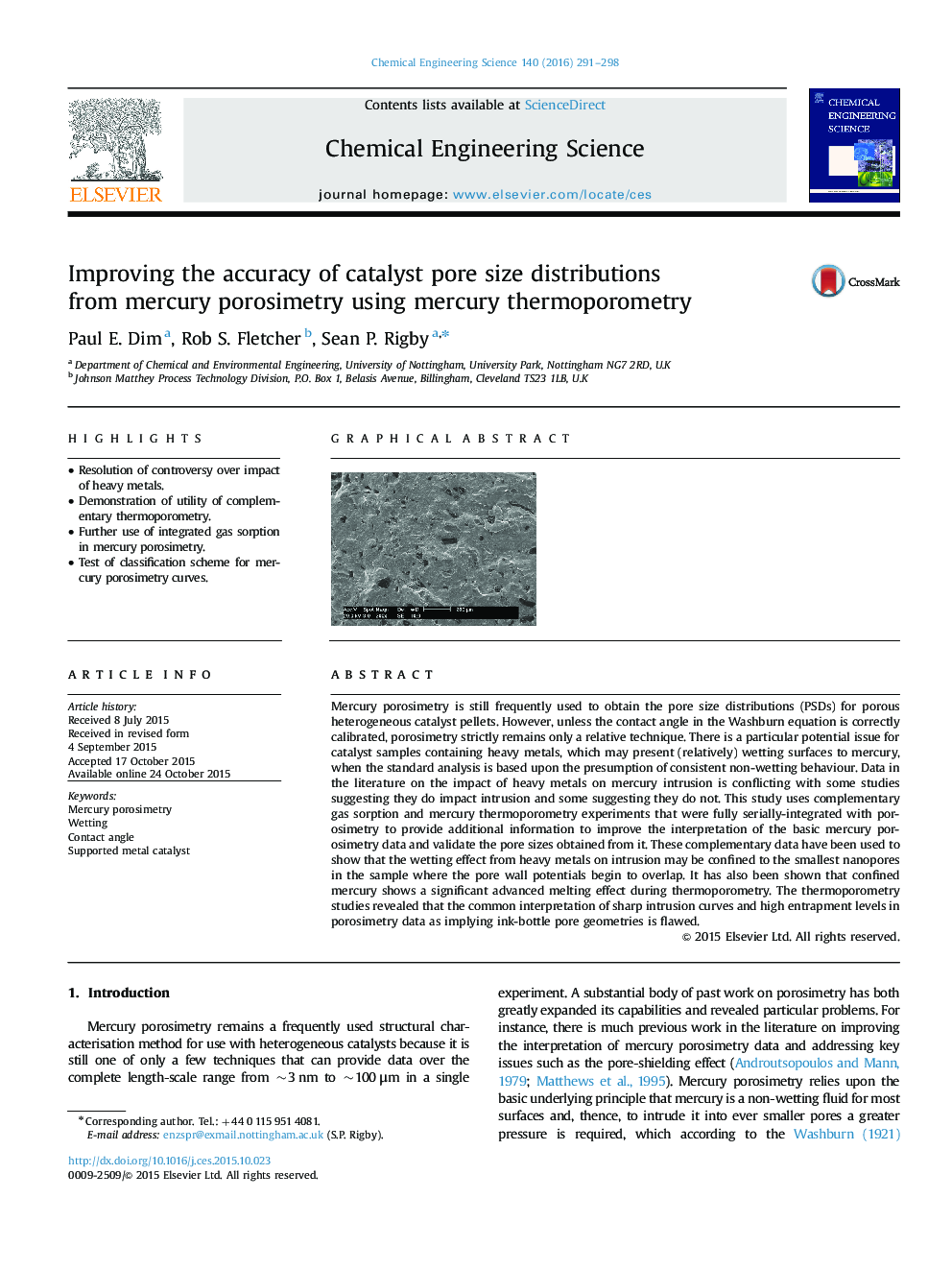| Article ID | Journal | Published Year | Pages | File Type |
|---|---|---|---|---|
| 154550 | Chemical Engineering Science | 2016 | 8 Pages |
•Resolution of controversy over impact of heavy metals.•Demonstration of utility of complementary thermoporometry.•Further use of integrated gas sorption in mercury porosimetry.•Test of classification scheme for mercury porosimetry curves.
Mercury porosimetry is still frequently used to obtain the pore size distributions (PSDs) for porous heterogeneous catalyst pellets. However, unless the contact angle in the Washburn equation is correctly calibrated, porosimetry strictly remains only a relative technique. There is a particular potential issue for catalyst samples containing heavy metals, which may present (relatively) wetting surfaces to mercury, when the standard analysis is based upon the presumption of consistent non-wetting behaviour. Data in the literature on the impact of heavy metals on mercury intrusion is conflicting with some studies suggesting they do impact intrusion and some suggesting they do not. This study uses complementary gas sorption and mercury thermoporometry experiments that were fully serially-integrated with porosimetry to provide additional information to improve the interpretation of the basic mercury porosimetry data and validate the pore sizes obtained from it. These complementary data have been used to show that the wetting effect from heavy metals on intrusion may be confined to the smallest nanopores in the sample where the pore wall potentials begin to overlap. It has also been shown that confined mercury shows a significant advanced melting effect during thermoporometry. The thermoporometry studies revealed that the common interpretation of sharp intrusion curves and high entrapment levels in porosimetry data as implying ink-bottle pore geometries is flawed.
Graphical abstractFigure optionsDownload full-size imageDownload high-quality image (310 K)Download as PowerPoint slide
